All issues

Volume 37, Issue 11
Displaying 1-3 of 3 articles from this issue
- |<
- <
- 1
- >
- >|
-
A Multicenter StudyYoshimi ASAGAI, Shunji OHSHITA, Tadashi NAKAGOMI, Akio MORIYAMA2000 Volume 37 Issue 11 Pages 711-716
Published: November 18, 2000
Released on J-STAGE: October 28, 2009
JOURNAL FREE ACCESSIn order to investigate the effects of rehabilitation in children with cerebral motor disorders when both the patients and their mothers are admitted to a hospital, we evaluated gross motor changes of patients admitted to 4 hospitals and homes for physically handicapped children, according to the same criteria. Ninety-three percent of the patients were less than 6 years of age, and among them those aged less than 3 years accounted for (64%) of the study population. Although there were only slight individual differences in the duration of hospitalization and severity of disorders, 71% of the 146 patients evaluated in this study showed some kind of improvement. The results of our study suggested the usefulness of one or two months of rehabilitation regarding gross motor functions. According to the kind of disease, improvements were noted in 74% of children with cerebral palsy, and 63% of children with congenital anomalies and other disorders. Changes were noted in all age groups, i. e., 72% of children aged≤3 years, 65% of children aged between 3 and 6 years, and 80% of children aged≥6 years. Among the subjects whose gross motor functions improved one grade, the items likely to improve were sitting on the floor and standing while holding on to something; while walking with crutches was unlikely to improve. According to the movement level, improvements were likely to occur from b (The level of the function training) to c (Support is necessary), while improvements were unlikely to be noted from a (The early stage of the function training) to the level b. Among the 43 patients who did not experience a significant improvement in gross motor functions, 39 were patients with either severe disorder and who could not hold their head or patients with a relatively mild disorders for whom the purpose of admission was to improve the walking posture. As for the remaining 4 patients, it was difficult to motivate them to engage in training because of complications such as lack of intention to move, convulsive seizures and visual or hearing disorder. In the future, it will be necessary to establish a reliable and reasonable method of evaluation and to identify the optimal indication, method, frequency, timing and effects of rehabilitation in children with cerebral movement disorder in a nationwide survey.View full abstractDownload PDF (902K) -
2000 Volume 37 Issue 11 Pages 717-814
Published: November 18, 2000
Released on J-STAGE: October 28, 2009
JOURNAL FREE ACCESSDownload PDF (17670K) -
2000 Volume 37 Issue 11 Pages 815-907
Published: November 18, 2000
Released on J-STAGE: October 28, 2009
JOURNAL FREE ACCESSDownload PDF (16877K)
- |<
- <
- 1
- >
- >|